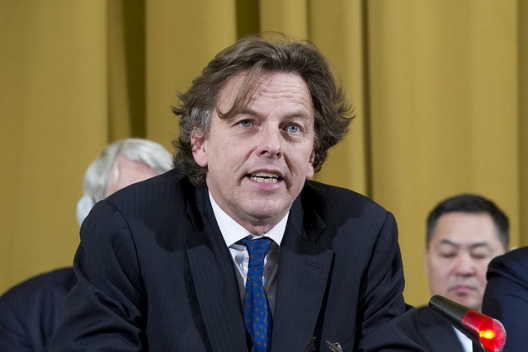 NATO’s collective strength lies in the solidarity among its members: one for all and all for one. The Netherlands is helping the alliance to make changes, for instance by enhancing the deployability and responsiveness of NATO units. One example is the Dutch contribution to NATO’s new spearhead force. This was the government’s message to Supreme Allied Commander, Europe (SACEUR) General Philip M. Breedlove today [March 26].
NATO’s collective strength lies in the solidarity among its members: one for all and all for one. The Netherlands is helping the alliance to make changes, for instance by enhancing the deployability and responsiveness of NATO units. One example is the Dutch contribution to NATO’s new spearhead force. This was the government’s message to Supreme Allied Commander, Europe (SACEUR) General Philip M. Breedlove today [March 26].
NATO’s most senior commander held talks today with Minister of Foreign Affairs Bert Koenders, Minister of Defence Jeanine Hennis-Plasschaert and Chief of Defence General Tom Middendorp. The discussions covered the challenges facing NATO in the years ahead and the threats at the periphery of NATO’s territory.
The ministers and the defence chief expressed their support for SACEUR’s efforts to improve NATO’s capability to respond quickly to threats. Emphasis was also placed on the great importance of NATO cooperating with other international organisations such as the EU. The ministers stressed that there can never be a purely military solution, which makes it very important for NATO’s political and military influence to be used in conjunction with the EU’s political instruments.
At last year’s NATO summit in Wales the Readiness Action Plan (RAP) was adopted, containing measures to enable a rapid, flexible and effective response to threats at the periphery of NATO’s territory. One such measure was the establishment of a Very High Readiness Joint Task Force (VJTF). Units on stand-by for the VJTF must be capable of being moved to the deployment area within a matter of days, and with some elements ready to move within 48 hours. The Netherlands, together with Germany and Norway, is providing interim capacity for the VJTF in 2015 and working closely with SACEUR on further developing the VJTF concept.
Mr Koenders also discussed Ukraine with General Breedlove, along with what he described as ‘worrying developments‘ in Russia in respect of nuclear weapons. Russia has stepped up the number of nuclear exercises and has been issuing provocative and threatening statements, for example regarding its right to place nuclear weapons in Crimea and in the Kaliningrad area. According to Mr Koenders, by making comments of this nature Russia is playing with fire. The minister said that he wanted to avoid being drawn into verbal posturing and an escalation of rhetoric, adding that it would be wise to keep the channels of communication with Russia open, including on military matters.
The defence minister spoke to General Breedlove about the threats on NATO’s periphery and about the need to increase the readiness, rapid deployability and availability of NATO forces. They also discussed the Netherlands’ contribution to the VJTF test-bed, the implications for the scope of the Netherlands’ military ambitions, and AWACS aircraft flights passing over the municipality of Onderbanken on their way to and from the NATO base at Geilenkirchen.
General Breedlove had travelled to the Netherlands for the Future Force Conference 2015, a three-day gathering at the National Military Museum in Soest focusing on the future of the armed forces.
Image: Dutch Foreign Minister Bert Koenders, March 2, 2015 (photo: Violaine Martin/United Nations)

